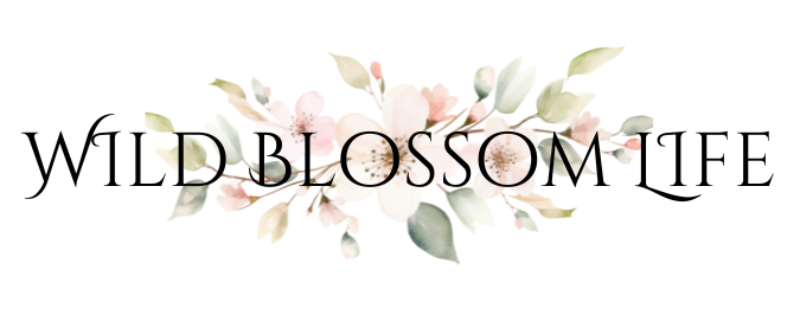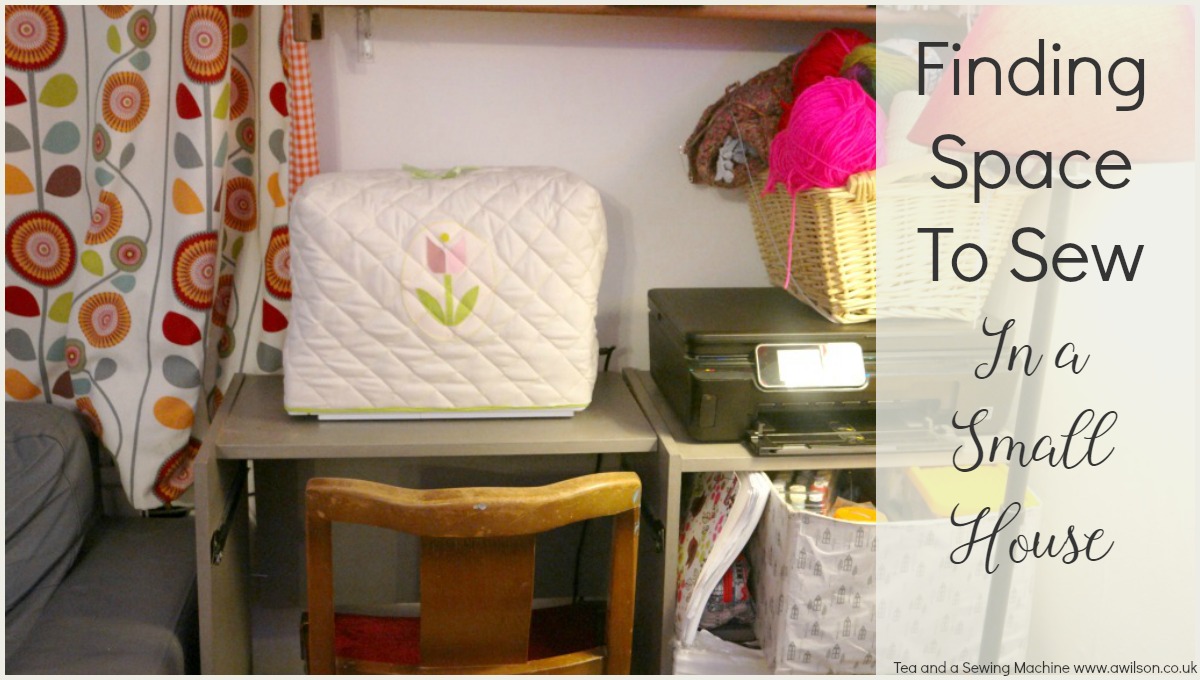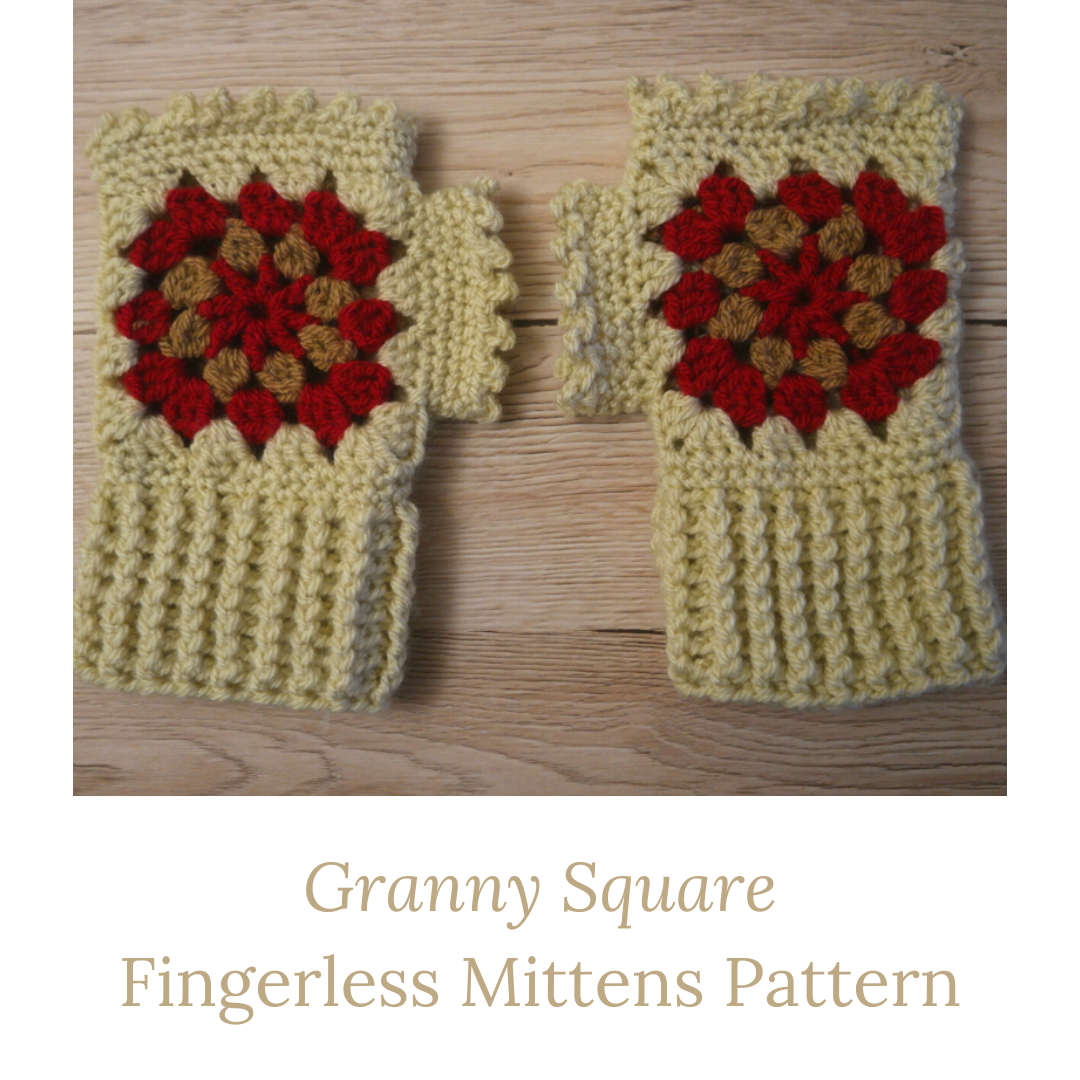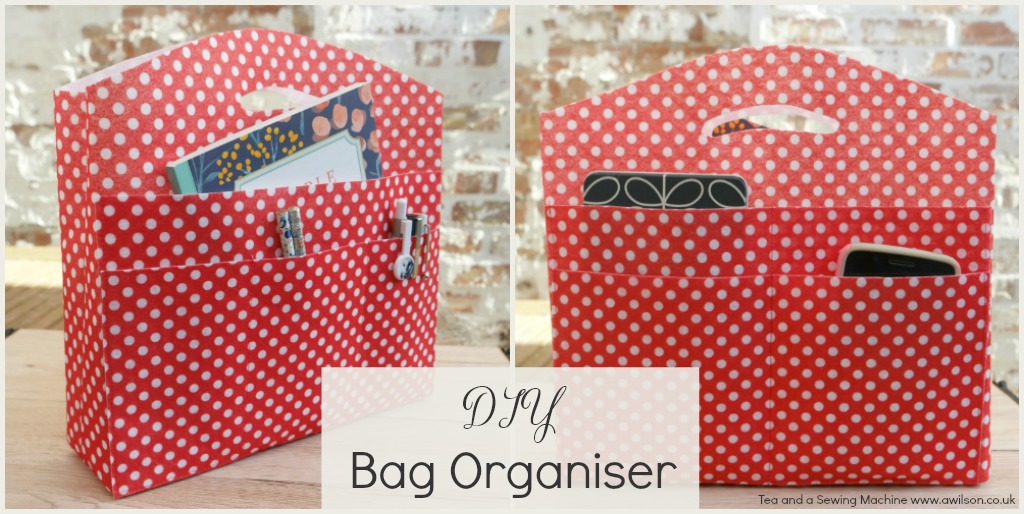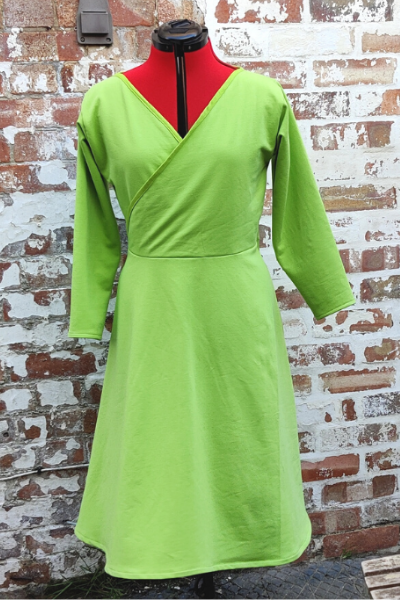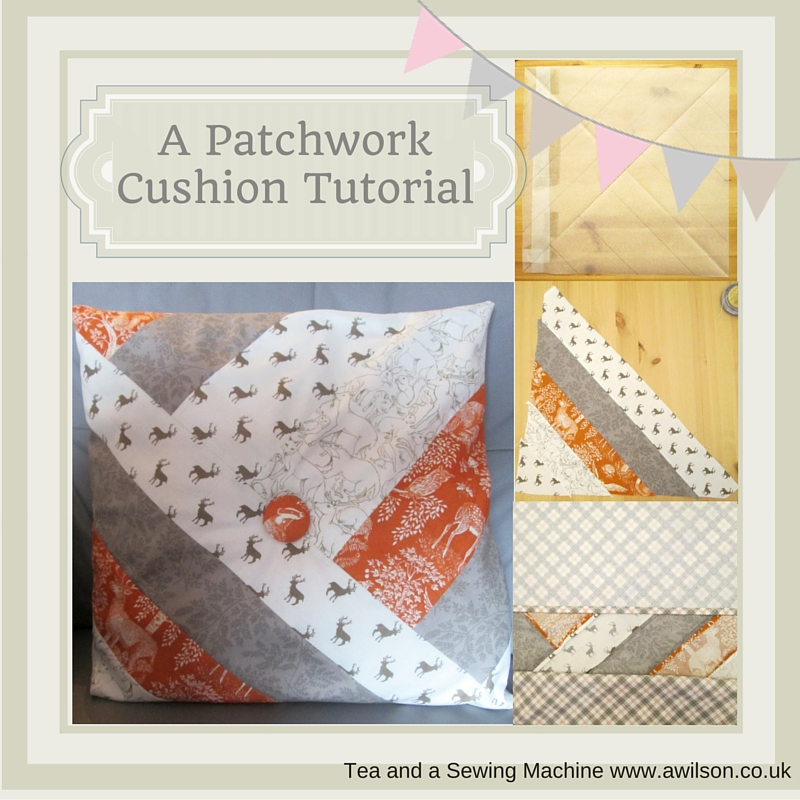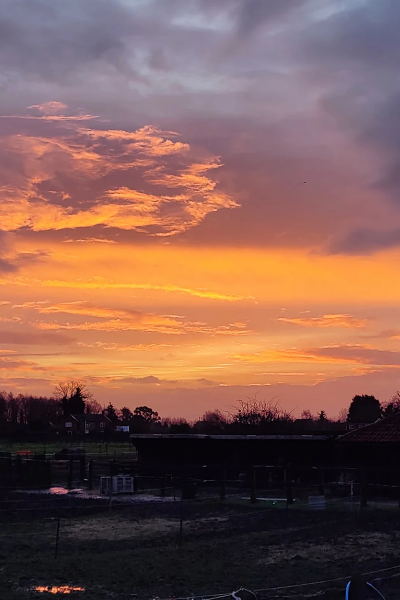How to Make Skeleton Leaves Using Embroidery and Water Soluble Fabric
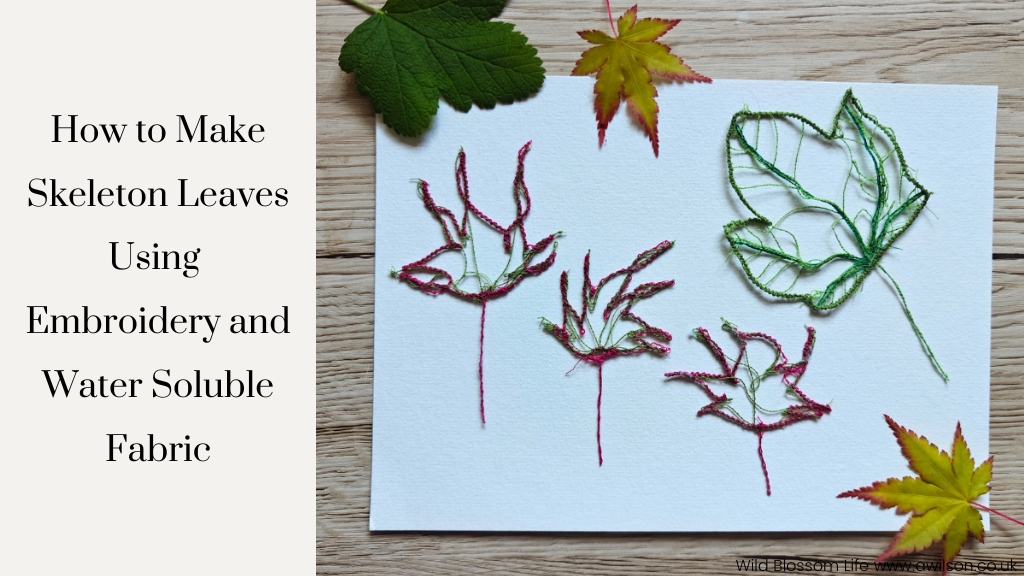
It’s a funny thing about nature that we are constantly reminded of cycles, yet as 21st century humans we seem to do everything we can to ignore them.
It’s late spring here in my little patch of Norfolk, and it’s one of my favourite times of year. Everything is green. The cherry blossom is over, but now the hawthorn is in flower and there are buds on the elder. There are lilacs in people’s gardens, and giant hogweed alongside the hedges.
A closer inspection reveals evidence of last years’ growing season. There are still some dead leaves, and seedheads from last year, alongside the new ones.
Nature seems at the same to be both delicate and fragile, and endlessly resilient. In the depths of winter, with shorter days, cold, wind, and endless rain, everything looks dead, but once Candlemas is past, signs of new growth start to appear. In summer, a garden might be left tidy while its caretakers go on holiday, but when they get back, everything will have grown, some of it too much. And places covered in concrete by humans, then abandoned, are soon reclaimed by nature.
Walking along my favourite footpaths in the village where I live, I’ve noticed all sorts of things that are both delicate and fragile, yet at the same time reveal nature’s resilience. New leaves, some so new that they are not even green but a kind of pre green pink or brown. Blossom in the hedgerows that a stiff breeze will turn into May’s answer to snow. By the end of September, the flowers will all have been replaced by red berries, to eventually be eaten by birds, and then the cycle starts again. On the verges, giant hogweed with its tiny, fragile flowers, yet it grows rampant, and becomes so wild that the council will send machines out to cut them all down.
Wanting to capture something of this delicateness, I decided to try a little experiment to make skeleton leaves using machine stitching and water soluble interfacing.
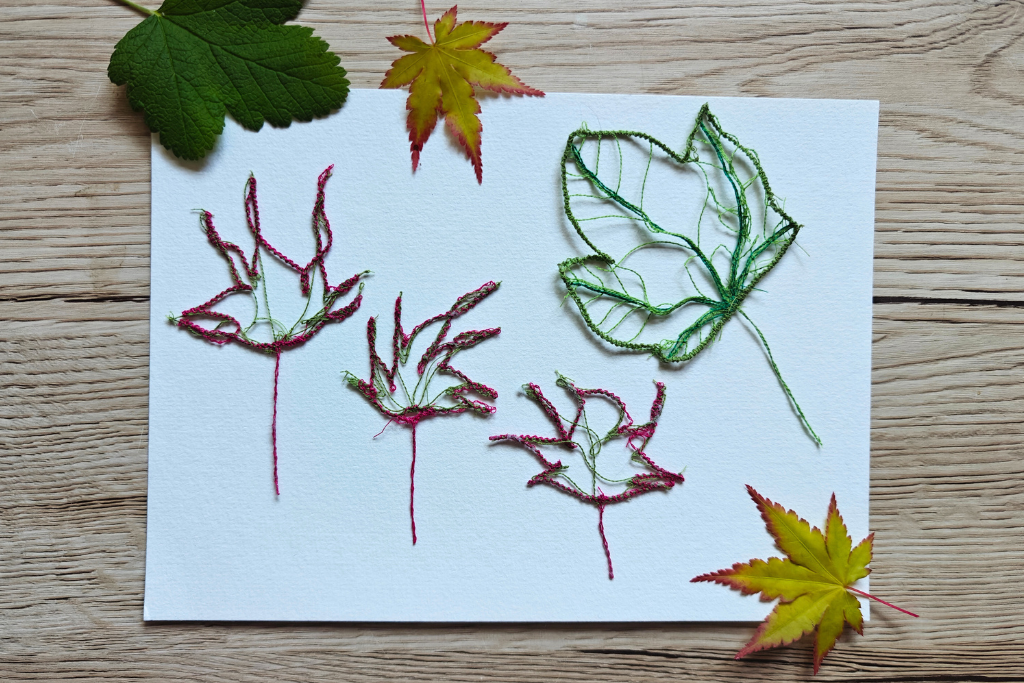
I haven’t come up with this idea myself. There is an artist called Meredith Woolnough who makes artworks using this same kind of idea. Her website is here if you want to have a look at what she does.
Water soluble interfacing looks the same as ordinary interfacing. I say this partly as a warning, because if you’re anything like me and you get some, you’ll forget, throw in the box with the rest of your fabric, then make something requiring interfacing and end up with interesting results when you wash it and the interfacing disappears!
Because the interfacing won’t be part of the end result, you can draw an outline on it first. You could even draw round a leaf or something if you didn’t want to draw it freehand.
I used the sewing machine to make the skeleton leaves, partly because it is quicker and partly because I thought it would probably hold together better than hand stitching. I didn’t really do machine embroidery, because I don’t know how to do that! Something about messing with the feed dogs and… anyway, I just sewed with it like I normally would, then did some extra zigzags around the outside to help it not fall apart once the interfacing had been dissolved.
How to Make Skeleton Leaves Using Water Soluble Interfacing
Draw a leaf shape onto the soluble interfacing. If you don’t like drawing, you could use a real leaf and draw round it. Pencil is probably better than pen, as it won’t stain the thread. You could draw veins on the leaf as well.
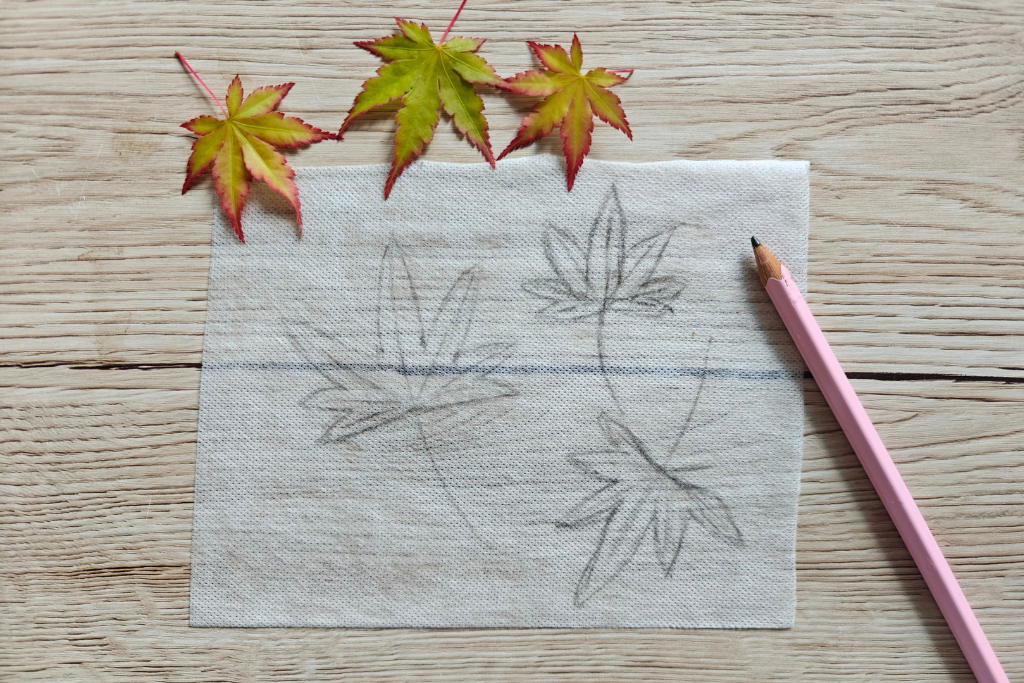
Sew around the edge of the leaf a couple of times. Sew along the veins.
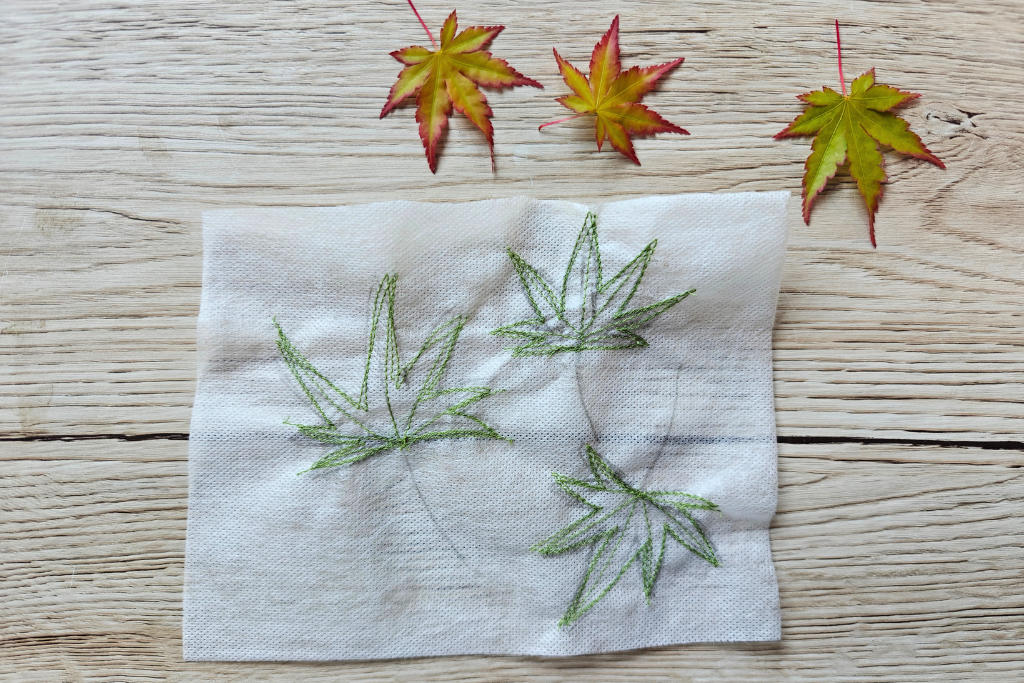
Then sew zigzags around the edge, over the stitching you have already done.
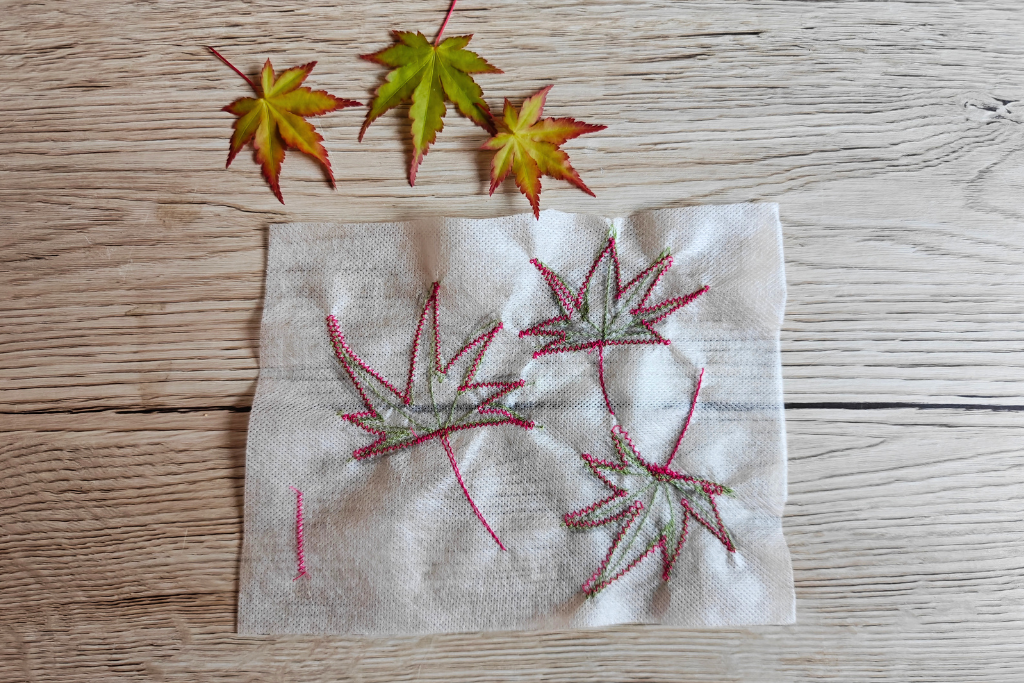
Cut it out, then dissolve the interfacing in warm water. It doesn’t take long, only a minute or two. You might be left with some glue. A little bit makes the stitching stiffer, but if there is too much, you can always pop it back in the water for a few seconds to dissolve it some more.
Leave your leaves to dry. In case there is some glue left on them, it’s probably best to leave them to dry on something that’s easy to remove, like a tea towel or a silicon mat.
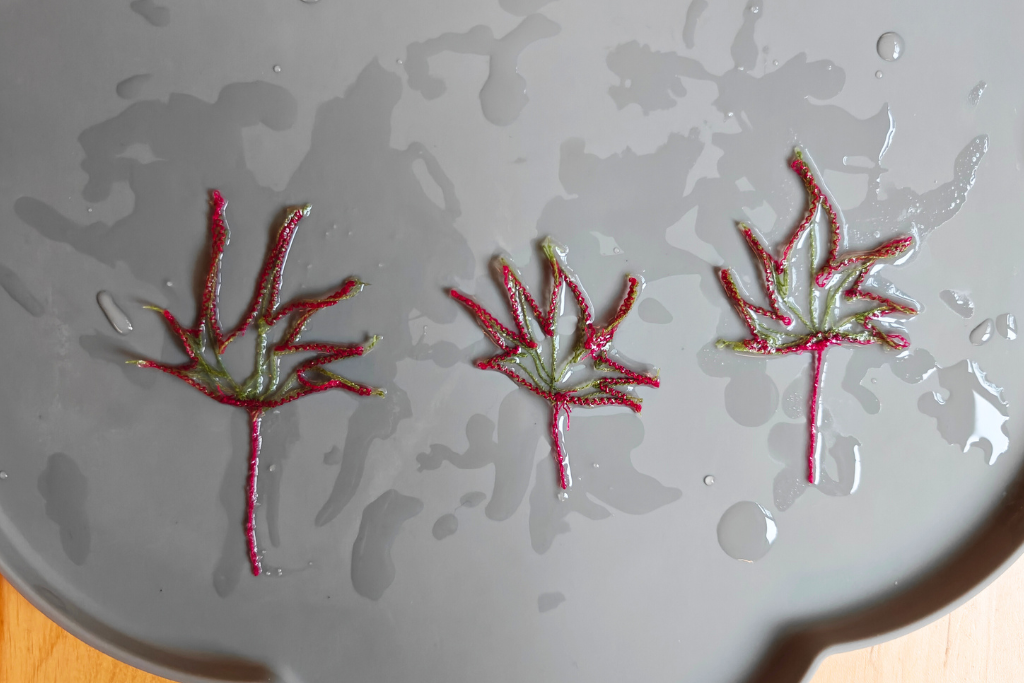
Once they are dry, you’ll be able to handle them without loosing the shape of the leaves.
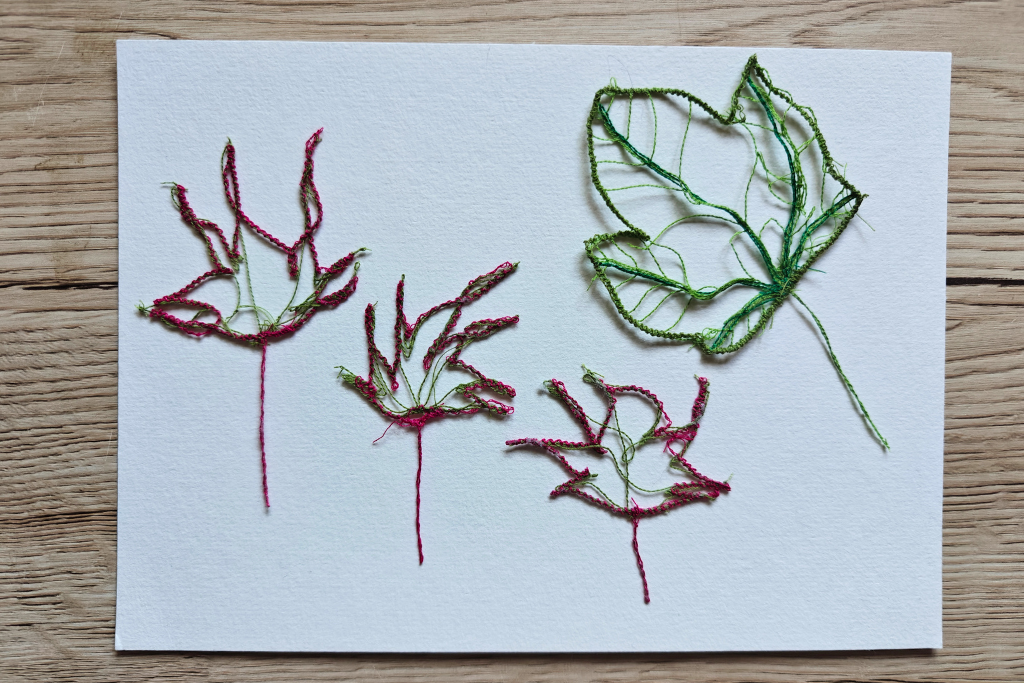
What to Do With Your Skeleton Leaves
You might find that making the leaves was enough, and you don’t want to do anything else with them.
But if you do, here are some ideas.
Use them to make cards.
Stick them to a piece of card and pop them in a frame.
Use them in a little piece of patchwork or applique. They might by quite nice on bunting, or a notebook cover.
If you can bear to, you could try printing with them. Paint and a paintbrush will do if you don’t have ink or a roller.
